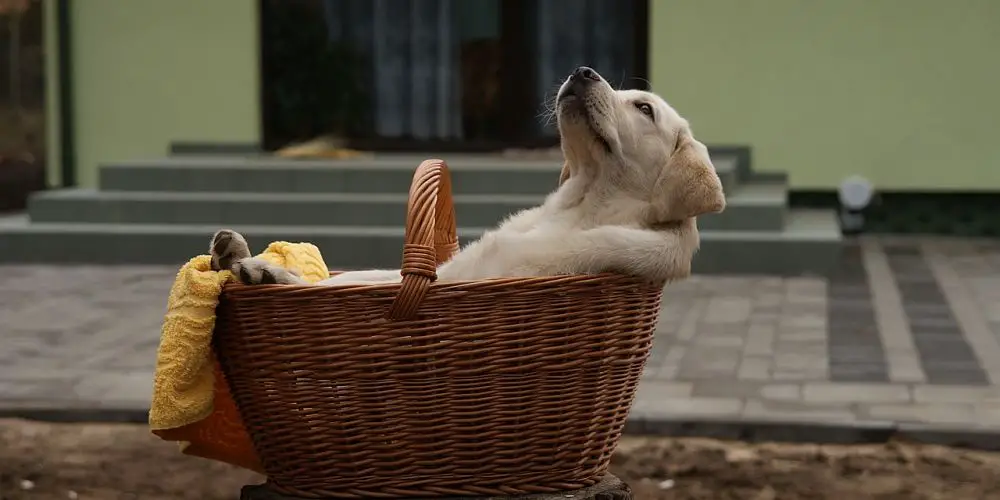
A dog in a basket
When you think about getting a new puppy, your first thoughts might be of the adventures you’ll go on together, or the times you’ll share together at home, snuggled on the couch. You’re probably not thinking about soiled carpets and crate training techniques, but the reality is that puppies are hard work. Before you head to the shelter, check out these tips for welcoming a new puppy into your home.
Take Time Off
One of the first things to consider about baby dogs is that they’re just that – babies. Most pups have never been away from their mother and siblings before, so this is all brand new to them. With that in mind, it’s important to take an active role in introducing your new pet to their new surroundings. Ideally, you can take a few days off work to get your new dog or puppy settled in to their new home. Use this time for play and exploration and don’t expect to get much training done, as new puppies tend to wear themselves out just exploring a new space.
Feed Them Well
Feeding your new pup high-quality meals will give them the nutrients and energy they need to grow. The advantage of a fresh-cooked diet, made from whole food ingredients, is that important vitamins and minerals can be more easily absorbed. Plus, Pet Plate meals are delivered in pre-portioned containers that contain just the right amount of food to meet your pup’s daily caloric requirements, so you’ll know your pup is being well nourished at every meal.
Crate Train Early
It may seem counterintuitive to start putting your new dog in its crate right away, but you’re really just looking to establish a comfortable place where they can take a time out when need be. It can take anywhere from a few days to a few weeks to get your pup comfortable in a crate. Begin guiding your pup into the crate with treats on day one. If they stay in there for a bit, give another reward. Soon enough, the dog will regard the crate as personal space and willingly head in there when you need to run to the store for a few minutes.
Be Patient. Be Consistent.
When you first get your puppy home, resist the urge to scold for bad behavior. After all, they don’t know what the rules are yet. For social—but undesired—behavior like nipping, remove your attention (voice, eye contact and touch), then resume attention once desired behavior begins again. For self-rewarding behavior like chewing electrical cords, interrupt and redirect the chewing behavior to an appropriate chew toy. Don’t forget to reward behavior that you like.
Consistency is the most important thing when it comes to training a new pup. Always respond the same way to behaviors, and sooner or later your pup will have that “aha” moment that all trainers are waiting for. When understanding strikes, take advantage with a reward. The only thing you your dog should ever be allowed to chew is its toys. Keep consistent with the rules and you will see great strides in your pet’s behavior.

A dog chewing rope
Train in Short Bursts
You may be inclined to start your pup on a sort of “doggy boot camp”, training for hours on all the commands you want them to learn. While well-intentioned, dogs tend to learn better when training is approached in short bursts several times a day. Start with one or two commands – “come” and “stay” is a good place to start – then build in new commands as your doggo progresses.
Bringing a new puppy home is serious business, but it doesn’t have to be intimidating. Following these tips will get you well on your way to a well-trained canine adventure companion for life.